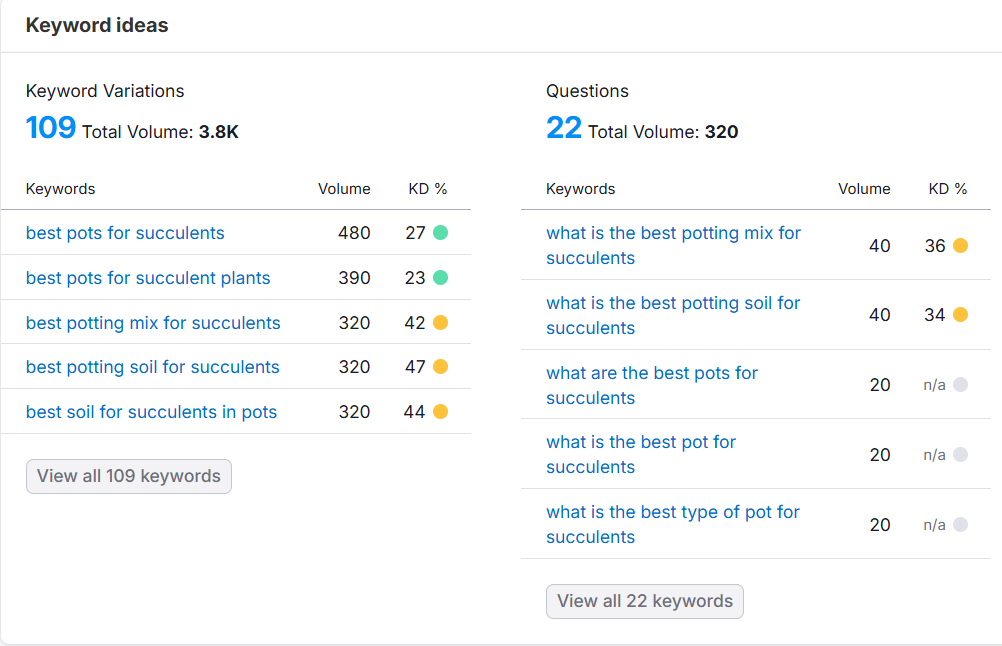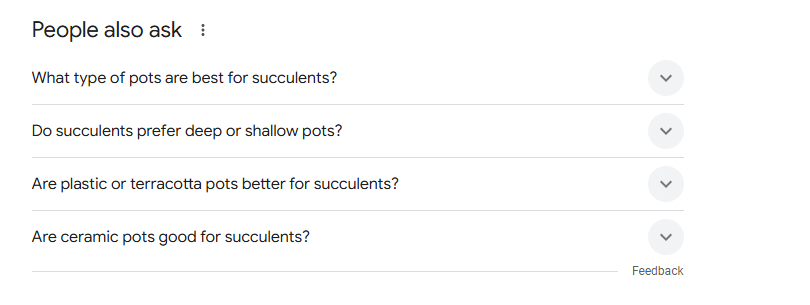Although SEO is far from a new concept, many still reduce this practice to simply listing keywords in a text. If you focus on ticking off all the words from your list without considering whether they fit naturally, you may find your blog in trouble.
Search engines analyze the context of your article, check for over-optimization, and assess whether the content meets search intent. To create a genuinely engaging and readable blog post, remember that you’re writing for humans while appealing to algorithms.
These expectations go well beyond the basics and require advanced techniques with your audience at the center of your strategy. In this guide, you’ll learn how to write SEO-friendly blog posts and turn your content into a powerhouse.
1. How to Prepare for Writing SEO-Friendly Blog Posts
Ready to discover how to write blog posts for SEO? Then start reading because the following strategies will help you establish the groundwork.
SEO-Friendly Blog Starts with Understanding Search Intent
Search intent refers to the reason behind a user’s query and whether they’re looking for information, comparing options, or ready to act. It’s Google’s priority to put content that meets these needs at the forefront. After all, search engines aim to deliver the most relevant and optimal results.
The type of search intent behind a query is the deciding factor in how you should create your content. For instance, actionable guides educating on watering schedules, light requirements, and soil types should follow informational searches like “how to care for indoor plants.”
Meanwhile, keywords like “best pots for succulents” often have a commercial or transactional focus and require content like product comparisons, shopping guides, or user reviews.
Keep in mind that it’s not enough that your blogs simply match intent. Instead, they should fulfill it 100 percent to ensure as few users as possible look for answers elsewhere. This means a user’s search journey only ends when a blog delivers complete, useful content.
Choose Strategic Keywords to Increase Relevance and Reach
Keyword research uncovers the terms your audience uses in searches. Tools like Google Keyword Planner, Semrush, or Ahrefs will help you identify terms that hit the middle ground between search volume and competition.
The next step is to analyze the top-ranking pages and understand the search intent behind these keywords. Identify the questions these pages answer and the content formats they use.
Another effective tactic is to group related keywords into clusters to target multiple search queries in a single post. Terms like “best running shoes,” “running shoes for beginners,” and “top-rated running shoes” can work together to create an extensive and search-optimized blog.

Must-Follow Tips for Structuring Blog Posts for Readability and SEO Impact
A logical hierarchy with clear headings and subheadings should serve as a sufficient content guide for your readers. Reinforce this by opening the article with a striking H1 that highlights the primary keyword, setting expectations.
Here are other strategies to write SEO-friendly content:
- Break down your blog into sections using H2s and H3s that mirror the natural flow of your topic. The best part of this structure is that it makes the text easy to skim and relevant for search engines.
- Keep your paragraphs short and try to stick to no more than three sentences. Otherwise, you risk losing readability, especially on mobile devices.
- Bullet points, numbered lists, and bold text will help draw attention to key details without overwhelming readers. Remember to make the layout more visually appealing and less intimidating with whitespace.
- Include relevant internal and external resources early in the text to make content more contextual and credible.
- A wall of text without images or multimedia to highlight key sections will drive readers away as quickly as they landed on the page. While you’re at it, don’t forget to optimize all visuals with descriptive alt tags that include secondary keywords in a meaningful way.
- Include a table of contents for longer posts.
2. Writing and Optimizing Content for SEO
Once the text structure is ready, it’s time for the next stage in writing SEO-friendly blog posts.
Include Keywords Naturally Without Overstuffing
Keywords should appear in strategic places within the text while reinforcing readability and context. Aim to use the primary keyword in the title, the first 100 words, and at least one subheading.
Secondary keywords should never feel out of place. Instead, they should flow naturally throughout the content. Place them in areas where they fit the user’s intent.
The golden rule is to avoid forcing keywords into sentences where they don’t belong, as this disrupts flow and lowers content quality. Rather than repeatedly writing “best laptops for students,” vary phrasing with “student-friendly laptops” or “top laptops for education.”
Thanks to this approach, you’ll satisfy search engines and keep your readers engaged enough to keep scrolling. Moreover, keyword variations and synonyms signal semantic relevance, which will help Google understand your topic without overstuffing.
Optimize Titles, Meta Descriptions, and URLs for Clicks and Rank
Titles introduce readers to the topic and often determine whether they continue reading. To spark and maintain their attention, titles should be intriguing, with the primary keyword fitting within the text effortlessly.
Avoid exceeding 60 characters to prevent truncation in search results. For example, instead of ‘Tips for Marketing,’ write ’10 Proven Marketing Strategies to Grow Your Brand.’
Don’t view meta descriptions as a necessary hassle. Instead, treat them as another opportunity to push your article to the top and summarize your content in 150–160 characters while addressing user intent. Include a CTA to encourage clicks, like ‘Discover actionable tips to boost engagement today.’
URLs should have concise, keyword-rich structures that clearly describe the page. This means avoiding generic strings like ‘/page1.’ Use clean formats, such as ‘/marketing-strategies,’ to improve click-through rates and search rankings.
Add Value Through Visuals and Interactive Elements
Visual content gets 94 percent more views than text only, making it a must-have element for breaking an article into cohesive parts. You can create quick and striking infographics to simplify data-heavy sections and make information easier to digest and share.
Meanwhile, charts, screenshots, or annotated images can make text more impactful and provide actionable context. Imagine writing a step-by-step guide on optimizing meta descriptions. In this case, you can include screenshots of effective examples with Yoast’s SEO recommendations.
If you want to go the extra mile, consider adding clickable timelines, image sliders, or expandable FAQ sections for greater engagement and longer on-page time. A post about content strategy might, for instance, feature an interactive timeline of how SEO trends evolved over the years.
Build Authority with Strategic Internal and External Linking
Connect related posts within an SEO topic cluster with internal links and make it easier for readers to navigate deeper into your content. The added bonus is greater topical authority.
You can link a blog on “SEO keyword research” to another about “long-tail keyword strategies.” However, don’t forget external links. After all, SEO experts rank them as the third most important factor for search optimization.
Link the data in your articles to credible, high-ranking sources to boost your content’s trustworthiness. This also complies with Google’s ranking criteria, where links contribute to the quality.
3. How to Make Blog Posts SEO Friendly with Advanced Techniques
The following tips will help your content get noticed and perform well regardless of device.
Write for Featured Snippets and Other SERP Features
Your content should directly answer user queries and have a concise and scannable format to increase your chances of capturing featured snippets. There are various ways to improve clarity, including using numbered or bullet lists, tables, or brief paragraphs.
Moreover, you can structure headings as questions users might search, such as “What is the best budget laptop?” You should also include specifics like pricing, top features, and comparisons when describing a product.

Keep Your Blog Posts Mobile-Friendly and Fast-Loading
We can’t stress enough how vital it is to use responsive design and lightweight elements that adapt to smaller screens. Fast load times can make or break your SEO blog efforts, so compress images, use lazy loading, and minimize code bloat.
Avoid pop-ups that block content on mobile devices, as they disrupt user experience and can lead to penalties. For instance, a blog with a one-second load time retains 32 percent more readers compared to one that takes 3 seconds, directly improving dwell time and rankings.
4. Blog Writing Tips for SEO That Help Maintain and Improve Blog Performance Over Time
Content is never really done, as you can always work on it, improve it, and polish it to keep it fresh.
Use Performance Data to Keep Your Blog Posts Crisp
Google Analytics, Search Console, and heatmap platforms like Hotjar can help you compile performance insights and gauge relevant metrics. Check bounce rates, time on the page, and scroll depth to identify weak points in your blog posts and address gaps in your content strategy.
If data shows readers abandoning a section, break it up with visuals or concise formatting. You may find that the “best productivity apps” article has slow-loading images, requiring optimization that leads to better UX and performance.
Update Older Blog Posts to Sustain Traffic Growth
Frequent audits will keep your older blog posts alive and help them attract new readers. Replace outdated stats with new information and insights, and ensure every data matches current trends.
Headlines may also need updates and revisions to reflect updated search intent, along with internal links to newer, related content. For example, if an old article on email marketing lacks AI insights, include a section on AI-driven personalization for higher relevance.
Avoid Common Mistakes That Undermine SEO-Friendly Blogs
Never overlook the following blunders:
- Relying solely on keyword-driven content limits its appeal and makes it come across as forced or amateur. Instead, prioritize authentic, evergreen content that solves specific problems or educates readers, even if you must sacrifice some keywords.
- Failing to prioritize content hierarchy may lead to confusion. Use a clear structure with H2 and H3 tags to give your articles a logical flow.
- Writing overly complex sentences alienates readers and mounts bounce rates. Stick to simplified language that makes content accessible without forgoing depth.
- Creating overly broad content weakens its focus. For example, targeting “social media tips” instead of “Instagram marketing for small businesses” dilutes value for readers and search engines.
- Using generic CTAs is an engagement killer. Your CTAs should match the reader’s stage in the buyer journey, such as “Download our advanced guide” instead of “Learn more.”
- Publishing without testing formatting can hurt usability. For instance, overly dense paragraphs or misplaced bullet points disrupt the reader’s experience.
Final Thoughts
Relying on just a few SEO strategies won’t generate enough attention or help your article go far. You must focus your efforts on creating lasting quality that attracts clicks, shares, and repeat readers.
This means always keeping user search intent in mind, structuring content for readability, and optimizing based on performance data. Business blogs, in particular, benefit from this approach, as they not only drive organic traffic but also position brands as authorities in their industries. Since every aspect of your blog, from keyword placement to internal linking, contributes to its success, it may be a good idea to collaborate with specialists. Teaming up with professionals who provide SEO services can help you deliver solutions that truly end the search journey for your audience.





